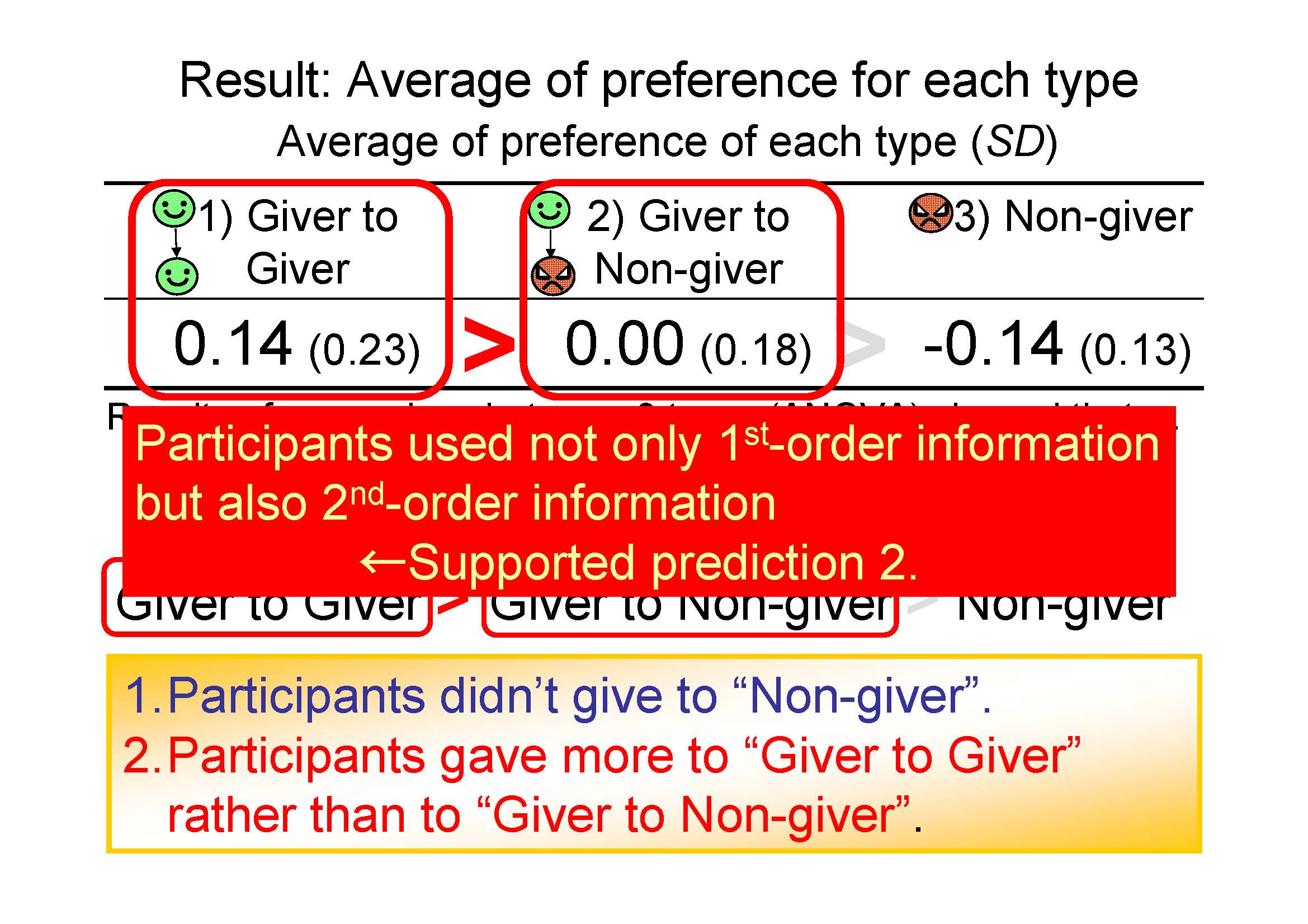

Rie Mashima
(Hokkaido University)
Is the enemy's friend an enemy? An experimental study to examine strategies in indirect reciprocity settings


Recent theoretical studies suggest that the key to the emergence of indirect reciprocity is discriminate altruism based on not only 1st-order information (others' previous behaviors) but also 2nd-order information (reputation regarding targets of others' previous behaviors). We conducted a laboratory experiment to examine people's actual strategies in indirect reciprocity settings. Participants played a repeated giving game in eight-person groups. In each round, participants were endowed 50 yen and asked to decide whether to give it to one of the other participants or keep it for themselves. When they made their decisions, they could see 1) 1st-order information: whether each target gave or did not give in the last round and 2) 2nd-order information: whether the person had given to a giver or a non-giver in the last round. (In actuality all the information was manipulated by the computer program in order to systematically examine people's behavioral patterns.) Results showed that participants used not only 1st-order information (gave more to previous givers than to previous non-givers) but also 2nd-order information (gave more to the persons who had given to givers than to the persons who had given to non-givers). These results are consistent with Takahashi and Mashima (2003)'s conclusion, suggesting that the key to the emergence of indirect reciprocity is to exclude not only free-riders but also indiscriminate givers who help free-riders.